Night Diving
Night diving is something that divers seem to love or hate, just like marmite!!! Night diving offers an experience that is completely different to day diving. First and foremost it’s dark and a torch is a must. The torch gives light, but it is concentrated, so you only get to see what is in the beam. If anything, this lets you focus more on the marine life that is highlighted.
It’s incredible to see the difference in life. The day shift is going to bed and the night shift is coming out. You will find fish tucking themselves into cracks in the rocks for protection against the nocturnal predators. Parrotfish, for example, can be seen with a protective mucus bubble surrounding them. This can only be produced once during the night, so it is important not to disturb the fish when shining the light.
If you should be lucky enough to see a turtle sleeping then just say “hi” and “goodbye”. When a turtle sleeps it lowers it’s heart rate, so that it is able to sleep without having to go to the surface for air. If the turtle is disturbed then it may become disorientated and doesn’t know which way up is.
Also, the shock of being woken could induce a heart attack, which is not a good scenario!! So it is important to show respect for the sleeping creatures and not shine the light directly into their eyes. Can you imagine what it is like when you are fast asleep and someone walks into your bedroom and puts the light on?
Predators, like moray eels looking for a midnight feast can often be seen free swimming at night. They look amazing as their undulating bodies move across the reef. During the day morays tend to hide in rocks, so it is hard to appreciate their size and beauty. Barracudas are really quiet cheeky and often use the torch light to locate their next meal. So, if you don’t want to be responsible for fish becoming a meal then don’t shine you torch on it!
The night shift includes crabs in all different shapes and sizes. Have a look in finger corals to find small porcelain crabs, look under coral blocks to find the larger ones. Decorator crabs, with their legs covered in camouflage are difficult to find as they look like the coral surrounding them. Sponge crabs are amusing to watch as they try and merge with the rocks, so they can’t be seen.
Lobsters can be seen walking around the reef and are very good rock climbers and they don’t even need crampons!! It’s amazing how quick these cumbersome creatures can move. Look in coral blocks and you will be able to see red dots, like little rubies. These are the eyes of shrimps, many different species in all shapes and sizes. Again, a lovely sight as they dance around.
There is just so much to see on a night dive, but the key is to move slowly and concentrate on a small area. Always take the opportunity to blank out your torch by placing it against your body (don’t switch it off) and wave your arms around. If the Bioluminescence are in full swing then you will create a magical moment as they sparkle around you.
Night diving is an experience not to be missed ………………………
Tags: Barracuda, Crab, Moray Eeel, Night Dive, PADI, PADI Professional, Phuket, Scuba Cat Diving, Thailand, Torch
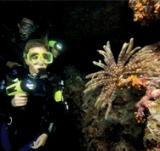
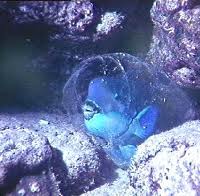
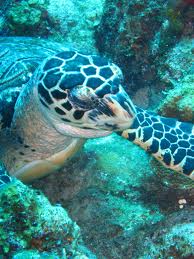
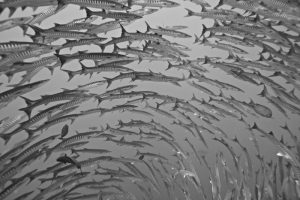
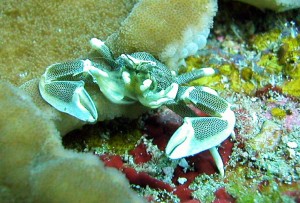






Scubacat Community